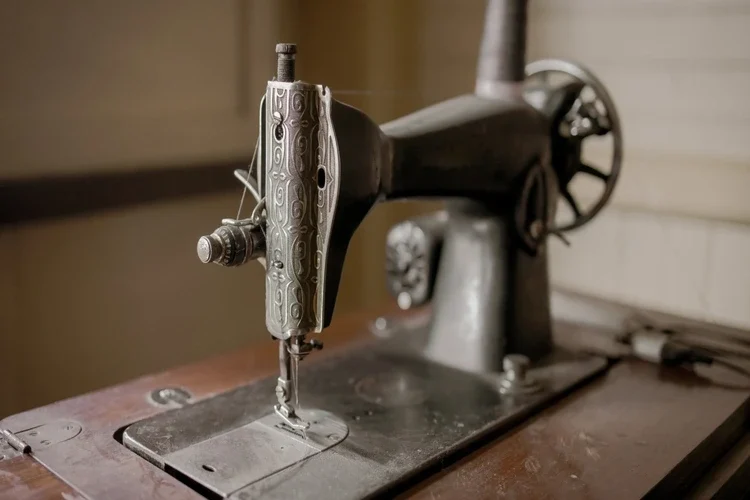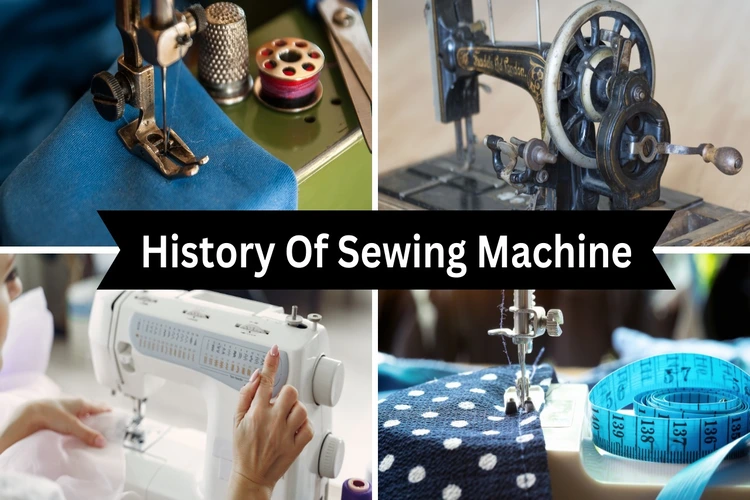Introduction
The sewing machine‘s history is rife with conflict, albeit not the tension typically associated with sewing. Instead, it’s a tension born from burning factories, riots, and legal disputes as the machine evolved. With advancements in its mechanics, problems like patent infringements, idea theft, and lawsuits surfaced. This tumultuous past reached its peak in the ‘Sewing Machine War,’ where Singer emerged as a prominent player vying for global recognition—a legacy that persists to this day.
A Journey Through Sewing Machine History

- In 1755, Charles Weisenthal
As far back as 1755, a German named Charles Weisenthal attempted to design a needle with an eye suitable for a sewing machine. Despite no explicit mention of a machine during that period, the needle’s design hinted at the existence of such a device.
- In 1790, Thomas Saint
Thomas Saint, a cabinet maker, crafted a hand-cranked machine specifically for working with leather and canvas. While it’s believed Saint had a functional sewing machine, evidence of a prototype is limited. His invention utilized a single thread to create a chain stitch.
- In 1810, Balthasar Krems
Balthasar Krems created a sewing machine specifically for sewing caps. Unlike traditional machines, this one operated without a thread, using a mechanical method to punch the thread through the fabric. However, despite its innovation, the design of the machine was never patented.
- In 1815, Josef Madersperger
Josef made his first attempt to build a sewing machine. Although his efforts were innovative, the machine he developed was not practical or widely used at that time.
- In 1830, Barthelemy Thimonnier
A French tailor named Barthelemy Thimonnier unveiled the first widely adopted sewing machine. Like Saint’s design, this machine utilized a single thread and a hooked needle to form a chain stitch. Its primary application was in the production of uniforms for the French army. Unfortunately, the sewing machine encountered resistance from French tailors, who protested outside Barthelemy Thimonnier’s factory and set it on fire due to fears of job loss to the machine. Thimonnier narrowly escaped the blaze that engulfed his factory, saving his life. Similarly, American inventor Walter Hunt abandoned his sewing machine invention for similar reasons. However, in the ensuing years, the sewing machine became a source of employment for both men and women.
- In 1844,John Fisher
John Fisher, an Englishman, invented a lace-making machine. However, due to misplaced patents and lack of recognition, he received no credit for his creation. Uninterested in pursuing the machine further, Fisher left America and returned to England. Two years later, upon his return to America, he found that his machine had been copied.
- In 1845, Ellias Howe
One year later, an American named Elias Howe created a sewing machine that utilized two threads. Diverging from the chain stitch, Howe’s machine produced the lockstitch. It included a needle with an eye at the tip, allowing the needle and thread to pass through the fabric and form a loop with a thread in a shuttle positioned beneath the fabric. Howe’s invention was a milestone, earning the patent for the first practical sewing machine.
- In 1851, Singer Machines
Isaac Singer delved into sewing machine production, quickly establishing dominance in the market. Singer sewing machines rose to prominence as the most coveted models, revolutionizing the industry with innovations like the foot pedal and vertical needle movement. Drawing inspiration from Fisher, Howe, Hunt, and Thimonnier, the manufacturers of Singer sewing machines incorporated elements from their inventions.
- In 1854, The Battle of Sewing Machines
Howe took Singer to court for patent infringement, and Howe emerged victorious, causing a stir in the sewing machine inventor community, igniting what later became known as the ‘Sewing Machine War.’ Legal pundits labeled the multitude of patents involved as a ‘patent thicket.’ To resolve the dispute, attorney Orlando Brunson Potter suggested that the warring factions join forces to create a patent pool. This suggestion gained traction, resulting in the amalgamation of all patents into a unified entity called ‘The Sewing Machine Combination.’ This practical approach enabled the ongoing advancement and innovation of sewing machines.
- In 1860, The Rise of Sewing Machine Production
Though Isaac Merritt Singer didn’t invent the sewing machine, his impact on its widespread manufacturing was profound. By 1860, his Singer brand had become the leading global name in sewing machines. Singer’s innovative hire-to-purchase concept played a significant role in this success, democratizing access to sewing machines for a broader audience. A skilled promoter, Singer’s flamboyant personality further fueled the popularity of his machines.
This increased accessibility revolutionized household dynamics, allowing more families to own sewing machines. Consequently, this surge in ownership created new job opportunities as factories embraced mass production of machine-sewn garments. Additionally, in the 1860s, women began organizing sewing circles, facilitating the exchange of ideas on the practical use of home sewing machines and further driving their adoption.
- In 1900s, Electric Machines
As electricity became more common, the sewing machine started to modernize, with the hand-operated mechanism being replaced by a foot pedal. However, the development of sewing machines was interrupted by the outbreak of World War, shifting focus and resources away from further advancements in this technology.
- In 1947, First Zig-Zag Stitches
In the realm of sewing machine technology, advancements persisted with the advent of the first zig-zag stitch introduced by the Italian company Necchi. This groundbreaking feature enabled the needle to move laterally, significantly expanding the machine’s capabilities.
Following this breakthrough, in 1950, Elna, a Swiss company, revolutionized the industry with a lightweight portable sewing machine. Departing from the traditional heavy cast iron construction, Elna’s innovation featured a body crafted from a lightweight alloy, facilitating easier transportation and use.
Elna continued to push the boundaries by introducing interchangeable cams or discs in 1952. These components allowed users to create an array of decorative stitches and empowered the machine to sew in multiple directions, including forward, backward, and side to side.
- The Modern Era
Modern sewing machines offer a plethora of advanced features, ranging from basic stitching to intricate embroidery, all controlled through user-friendly computer interfaces. This diverse range of machines includes mechanical sewing machines, embroidery machines, industrial sewing machines, and quilting machines.
Conclusion
The intricate history of the sewing machine spans 150 years, starting from the debut of the first operational machine in 1830 to the introduction of fully motorized models in the 1980s. Today’s sewing machines exemplify the ingenuity of the home industry, offering a wide range of options including computerized machines and sergers.
Did you know that September is recognized as National Sewing Machine Month? In 1982, President Ronald Reagan officially declared September as National Sewing Machine Month to pay homage to this revolutionary invention. Throughout this month, sewing enthusiasts come together at fairs and gatherings to celebrate the profound impact of the sewing machine on the lives of countless women and designers worldwide.
You may also like:
- Different Types of Sewing Machines
- Sewing Machine Parts And Functions
- Using a Seam Ripper: A Step-by-Step Guide
- Count of Yarn: Explanation and Varieties
- Yarn Manufacturing Process
- Varieties of Woven Fabrics and Their Applications
- Non Woven Geotextile Fabric
- What is Sisal Fiber? Properties, Structure, and How It Made?
Share this Article!

